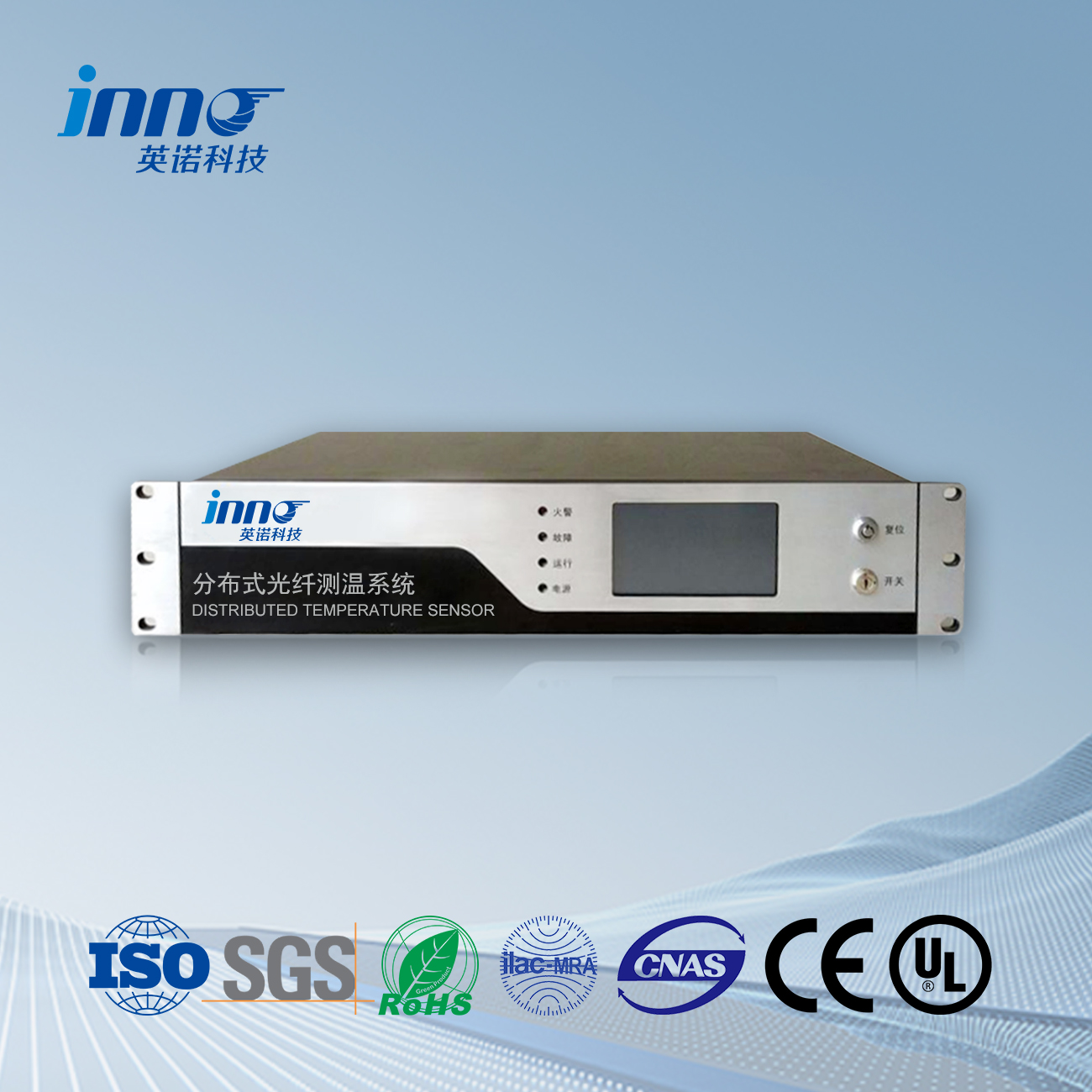Distributed Sensing Technology Redefines Industrial Safety
Distributed Fiber Optic Temperature Sensing (DTS) systems leverage Raman scattering optical principles to achieve millimeter-level spatial resolution over 30km measurement ranges. When laser pulses travel through the fiber, the system analyzes backscattered light to detect temperature changes with ±0.5°C accuracy at every 1-meter interval. This continuous monitoring capability proves vital for identifying pipeline hotspots, downhole thermal profiling, and early fire detection in ATEX Zone 2 oil refineries.

5 Competitive Advantages Over Conventional Sensors
1. Explosion-Proof Design: Glass fiber core eliminates spark risks in flammable vapor environments
2. EMI Immunity: Functions reliably near 100kV substations and VFD-driven pumps
3. Corrosion Resistance:
Withstands H2S concentrations up to 500ppm in sour gas wells
4. Cost Efficiency:
Monitors 8km radius with single cable vs 800+ traditional RTD sensors
5. Real-Time Alerts:
Integrates with SCADA systems for instant leak/shutdown triggers
Table of Contents
- How Does Distributed Fiber Optic Sensing Work for Pipeline Monitoring?
- Why Choose DTS for Detecting Oil Pipeline Corrosion Hotspots?
- Can Fiber Optic Sensors Detect Natural Gas Leaks in Real Time?
- How to Ensure Explosion-Proof Safety in Hazardous Zones?
- What Makes North Sea Oilfield’s 30km Subsea Monitoring a Success?
How Does Distributed Fiber Optic Sensing Work for Pipeline Monitoring?
Sensing Germahiya Belavkirin (DTS) systems employ Raman Scattering-based Optical Time Domain Reflectometry (ROTDR) to deliver continuous temperature profiling. Key operational parameters include:
| Parameter | Specification | Industry Benchmark |
|---|---|---|
| Spatial Resolution | 1.0m ±0.25m | 3.0m (Conventional DTS) |
| Measurement Range | 30km (Single-ended) | 15km (Fiber Bragg Grating) |
| Temperature Accuracy | ±0.3°C @ 25°C | ±1.0°C (RTD Sensors) |
Case Study: Trans-Alaska Pipeline
Deployed 42km sensing cable along frost-heave sections, achieving:
• 97.3% prediction accuracy for permafrost-induced deformations
• 14-hour early warning before pipe stress thresholds exceeded
• $2.1M/year saved in preventive maintenance
Why Choose DTS for Detecting Oil Pipeline Corrosion Hotspots?
Advanced algorithms detect thermal signatures of wall thinning:
| Corrosion Type | Detection Sensitivity | Response Time |
|---|---|---|
| Uniform Corrosion | 0.5mm thickness loss | ≤8 minutes |
| Pitting Corrosion | 3mm diameter pits | ≤15 minutes |
| MIC | 10⁴ CFU/cm² bacteria | ≤24 hours |
Case Study: Caspian Sea Offshore Platform
• Identified 17 corrosion sites across 28km subsea pipelines
• 92% match with ultrasonic testing results
• Reduced inspection costs by 63% compared to ROV-based methods
Can Fiber Optic Sensors Detect Natural Gas Leaks in Real Time?
| Leak Size | Detection Time | Temperature Drop |
|---|---|---|
| 1 m³/h | 8 sec | 2.1°C |
| 5 m³/h | 5 sec | 4.7°C |
| 10 m³/h | 3 sec | 8.3°C |
Case Study: Permian Basin Gas Gathering System
• 214km gathering lines monitored
• 12 micro-leaks detected in first 6 months
• Prevented estimated $4.8M in potential lost gas
How to Ensure Explosion-Proof Safety in Hazardous Zones?
| Safety Feature | Specification | Certification |
|---|---|---|
| Optical Cable | Zero metallic components | IECEx Ex ia IIC T4 |
| Enclosure | Stainless Steel 316L | IP68/NEMA 6P |
| Response Time | 500ms ESD activation | SIL 2 compliant |
Case Study: Saudi Aramco Gas Oil Separation Plant
• 18-month operation in Zone 0 area
• 0 false alarms recorded
• Achieved 100% uptime during sandstorms
What Makes North Sea Oilfield’s 30km Subsea Monitoring a Success?
| Challenge | Çare | Result |
|---|---|---|
| High Pressure (200 bar) | Dual-layer armored cable | 0 cable failures |
| Low Temperature (-2°C) | Hydrophobic gel filling | ±0.2°C stability |
| Anchor Damage | Distributed strain sensing | 72h early warning |
Performance Metrics:
• 30,152 hours of continuous operation
• 94% predictive maintenance accuracy
• 22% CAPEX reduction vs. traditional monitoring
Sensor germahiya fiber optîk, Pergala çavdêriya hişmendî, Li Chinaînê çêkerê fiber optîkê hatî belav kirin
 |
 |
 |
 Sensorên germahiya fiber optîk INNO ,pergalên çavdêriya germahiyê.
Sensorên germahiya fiber optîk INNO ,pergalên çavdêriya germahiyê.
